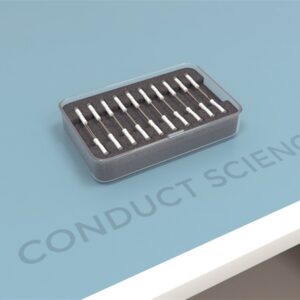$1,990.00 – $2,490.00Price range: $1,990.00 through $2,490.00
The parallel beam task (PBT) was used by Brian Ficiur et al. (2016), in an experiment to assess skilled walking in a rat model of cerebral ischemia.
The parallel beam task in which animals walk across two elevated parallel beams, is commonly used to assess motor deficits in laboratory rodents. Performance of the PBT challenges postural balance, inter-limb coordination and skilled walking abilities, and is typically assessed by quantitative measures such as number of foot slips and/or successful traversals.
It consists of two horizontal, parallel flat metal beams. It is framed by Plexiglas side walls along the length of the parallel beams.
Mazeengineers offers the Parallel Beam Task.

MazeEngineers empowers preclinical neuroscience research with meticulously designed, customizable behavioral apparatuses. From manual classic mazes to fully automated smart systems, we provide the tools scientists need to capture high-quality, reproducible data for studies on learning, memory, anxiety, and depression.



Mouse | Rat |
Length of parallel metal beams: 66 cm | Length of parallel metal beams: 100 cm |
Width of parallel metal beams: 0.6 cm | Width of parallel metal beams: 1 cm |
Space between metal beams: 2.3 cm | Space between metal beams: 3.5 cm |
Space between plexiglas side walls: 6 cm | Space between plexiglas side walls: 9 cm |
Height of plexiglass side walls: 12.54 cm | Height of plexiglass side walls: 19 cm |
Height of beam above the ground: 19.8 cm | Height of beam above the ground: 30 cm |



| Species | Mouse, Rat |
|---|
There are no questions yet. Be the first to ask a question about this product.